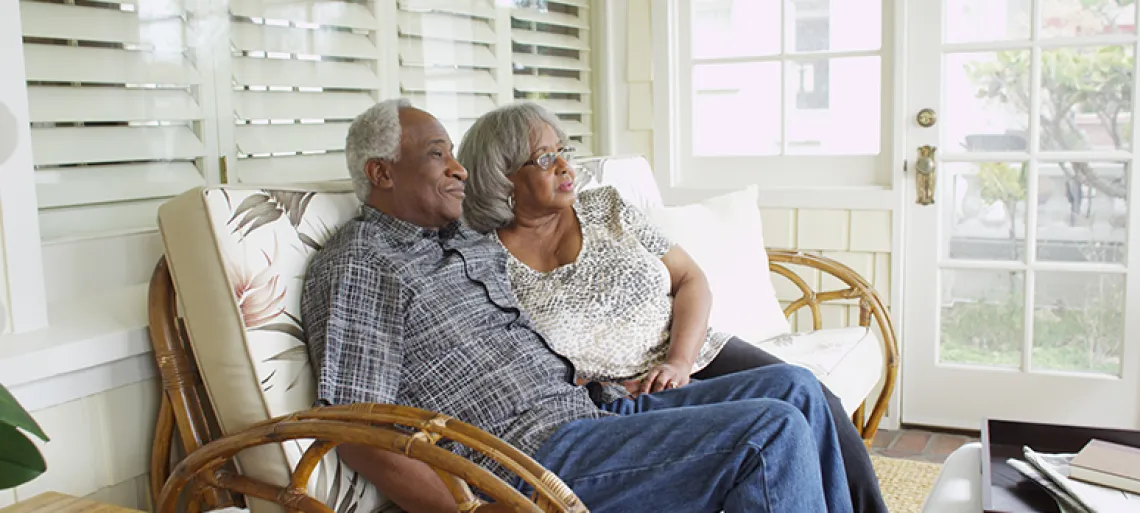
Quality of life has much to do with our choices regarding where we live in later life. Many adults over 65 prefer to “age in place” or live in their homes and community and remain independent for as long as possible. No matter how an adult ages, challenges can get in the way of independence, like access in and out of the home, transportation, connection, income, and potential caregiving needs for physical, medical, and cognitive function. Here are some approaches to conversations about the places and spaces or the “where” of aging and how this relates to caregiving.
Set goals. We must consider the increased challenges to our physical, medical, cognitive, and emotional well-being as we age. Creating a care plan-- a detailed and specific plan to define and set goals for care and life, is an opportunity to honor the specific needs of the older adult and connect them with goals regarding care, services, and support for the older adult and the caregiver. Goals for aging in place include maintaining independence, ensuring safety, and connecting with others. Caregiving goals include honoring these goals while balancing school, work, family, and life.
Gather information. Before the conversation, gather the information you need. Conversations can often be cut short because of misconceptions and even fears about long-term plans for aging in place. Review information on community-based services available for safety, prevention, and comfort. Bringing information and planning for the worst and best-case scenarios can promote a better understanding of the realities of aging and create the foundation for a plan of action to stay in the home while maintaining a good quality of life.
Gathering information (and sometimes dispelling myths) about other housing options can alleviate the impact of sudden change. For example, knowing about home care, assisted living, skilled nursing care, over 55 communities, downsizing, home sharing, or other housing options may never come into your care plan. However, it is good information to know and perhaps share with others.
Lean in. To lean in means you accept the challenges of caregiving and aging that are tough to talk about and to consider, and easier to avoid and postpone. When we lean into best and worst scenarios (and everything in between), we better understand how we can enable our loved ones to age in place in the best environment possible. Change happens at different and often unexpected rates. Lean in when:
- There is a medical diagnosis that includes treatments that require help with shopping or meals.
- There is a hospitalization, a stay in a skilled nursing facility, and the need to recover at home.
- You need creative ways to access transportation, grocery stores, or social opportunities.
- Safety becomes a greater concern, or there are changes in cognition
Pull in the good life. Goals, information, and leaning into challenges are all part of the beauty of caregiving and aging in place. In our everyday lives, there are so many moments and truths we can pull in:
- You are doing the best you can with caregiving and advocating for the quality of life of everyone in your life.
- All you do (both big and small picture) to honor older adults' wishes, including those for aging in place.
- Your commitment to ongoing care plan goals with aging and place, even with the unexpected or when goals must be redefined.
- Taking steps to utilize self-care, services, and support to uphold aging in place for the older adult and you.
- Understanding and using self-care techniques, respite, and the support and services you need to address stress.
- The conversations about a good life, even if the plan must change.

